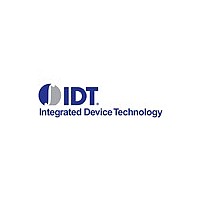IDT82P2282 Integrated Device Technology, Inc., IDT82P2282 Datasheet - Page 15

IDT82P2282
Manufacturer Part Number
IDT82P2282
Description
2 Channel T1/J1/E1 Transceiver
Manufacturer
Integrated Device Technology, Inc.
Datasheet
1.IDT82P2282.pdf
(383 pages)
Available stocks
Company
Part Number
Manufacturer
Quantity
Price
Company:
Part Number:
IDT82P2282PF
Manufacturer:
IDT
Quantity:
355
Company:
Part Number:
IDT82P2282PF
Manufacturer:
IDT, Integrated Device Technology Inc
Quantity:
10 000
Company:
Part Number:
IDT82P2282PF8
Manufacturer:
IDT, Integrated Device Technology Inc
Quantity:
10 000
Company:
Part Number:
IDT82P2282PFG
Manufacturer:
HITACHI
Quantity:
1 452
Company:
Part Number:
IDT82P2282PFG
Manufacturer:
IDT, Integrated Device Technology Inc
Quantity:
10 000
Company:
Part Number:
IDT82P2282PFG8
Manufacturer:
IDT, Integrated Device Technology Inc
Quantity:
10 000
- Current page: 15 of 383
- Download datasheet (3Mb)
IDT82P2282
2
Note:
* The contents in the brackets indicate the position of the preceding bit and the address of the register. After the address, if the punctuation ‘,...’ is followed, this bit is in a per-link control reg-
ister and the listed address belongs to Link 1. Users can find the omitted addresses in Chapter 5. If there is no punctuation followed the address, this bit is in a global control register.
Pin Description
RSIG[1] / MRSIG
RSD[1] / MRSD
RRING[1]
RRING[2]
TRING[1]
TRING[2]
RSIG[2]
RTIP[1]
RTIP[2]
TTIP[1]
TTIP[2]
RSD[2]
Name
PIN DESCRIPTION
Output
Output
Output
Type
Input
Pin No.
27
12
28
11
21
18
22
17
79
71
78
70
RTIP[1:2] / RRING[1:2]: Receive Bipolar Tip/Ring for Link 1 ~ 2
These pins are the differential line receiver inputs.
TTIP[1:2] / TRING[1:2]: Transmit Bipolar Tip/Ring for Link 1 ~ 2
These pins are the differential line driver outputs and can be set to high impedance state globally or individually. A logic
high on the THZ pin sets all these pins to high impedance state. When the T_HZ bit (b4, T1/J1-023H,... / b4, E1-
023H,...) * is set to ‘1’, the TTIPn/TRINGn pins in the corresponding link are set to high impedance state.
Besides, TTIPn/TRINGn will also be set to high impedance state by other ways (refer to Chapter 3.25 Line Driver for
details).
RSD[1:2]: Receive Side System Data for Link 1 ~ 2
The processed data stream is output on these pins.
In Receive Clock Master mode, the RSDn pins are updated on the active edge of the corresponding RSCKn.
In Receive Clock Slave mode, selected by the RSLVCK bit (b4, T1/J1-010H / b4, E1-010H), the RSDn pins are
updated on the active edge of the corresponding RSCKn or both two RSDn pins are updated on the active edge of
RSCK[1].
MRSD: Multiplexed Receive Side System Data for Link 1 ~ 2
In Receive Multiplexed mode, the MRSD pin is used to output the processed data stream. Using a byte-interleaved
multiplexing scheme, the MRSD pin outputs the data from Link 1 and Link 2. The data on the MRSD pin is updated on
the active edge of the MRSCK.
RSIG[1:2]: Receive Side System Signaling for Link 1 ~ 2
The extracted signaling bits are output on these pins. They are located in the lower nibble (b5 ~ b8) and are channel/
timeslot-aligned with the data output on the corresponding RSDn pin.
In Receive Clock Master mode, the RSIGn pins are updated on the active edge of the corresponding RSCKn.
In Receive Clock Slave mode, selected by the RSLVCK bit (b4, T1/J1-010H / b4, E1-010H), the RSIGn pins are
updated on the active edge of the corresponding RSCKn or both two RSIGn are updated on the active edge of
RSCK[1].
MRSIG: Multiplexed Receive Side System Signaling for Link 1 ~ 2
In Receive Multiplexed mode, the MRSIG pin is used to output the extracted signaling bits. The signaling bits are
located in the lower nibble (b5 ~ b8) and are channel/timeslot-aligned with the data output on the MRSD pin. Using the
byte-interleaved multiplexing scheme, the MRSIG pin outputs the signaling bits from Link 1 and Link 2. The signaling
bits on the MRSIG pin is updated on the active edge of the MRSCK.
Line and System Interface
4
DUAL T1/E1/J1 LONG HAUL / SHORT HAUL TRANSCEIVER
Description
October 7, 2003
Related parts for IDT82P2282
Image
Part Number
Description
Manufacturer
Datasheet
Request
R

Part Number:
Description:
Integrated Processor
Manufacturer:
Integrated Device Technology, Inc.

Part Number:
Description:
Integrated Riscontroller for Low-Cost Systems
Manufacturer:
Integrated Device Technology, Inc.

Part Number:
Description:
INTEGRATED RISController FOR LOW-COST SYSTEMS
Manufacturer:
Integrated Device Technology, Inc.

Part Number:
Description:
SwitchStar ATM Cell Based 1.2Gbps non-blocking Integrated Switch Controller
Manufacturer:
Integrated Device Technology, Inc.
Datasheet:

Part Number:
Description:
3.3V CMOS 16-bit bidirectional transceiver
Manufacturer:
Integrated Device Technology, Inc.
Datasheet:

Part Number:
Description:
3.3 CMOS octal buffer/line driver
Manufacturer:
Integrated Device Technology, Inc.
Datasheet:

Part Number:
Description:
Fast CMOS octal registered transceivers
Manufacturer:
Integrated Device Technology, Inc.
Datasheet:

Part Number:
Description:
Fast CMOS octal bidirectional transceivers
Manufacturer:
Integrated Device Technology, Inc.
Datasheet:

Part Number:
Description:
Fast CMOS 16-bit buffer/line driver
Manufacturer:
Integrated Device Technology, Inc.
Datasheet:

Part Number:
Description:
2.5 V/3.3 V 10 Bit High Bandwidth Bus Switch with Precharged Outputs
Manufacturer:
Integrated Device Technology, Inc.
Datasheet:

Part Number:
Description:
High-Speed CMOS Quick Switch 16:8 Multiplexer
Manufacturer:
Integrated Device Technology, Inc.
Datasheet:

Part Number:
Description:
QUICKSWITCH?? PRODUCTS HIGH-SPEED CMOS QUICKSWITCH DOUBLE-WIDTH BUS SWITCH IDTQS32X245Q2QUICKSWITCH PRODUCTS HIGH-SPEED CMOS QUICKSWITCH DOUBLE-WIDTH BUS SWITCH
Manufacturer:
Integrated Device Technology, Inc.
Datasheet:

Part Number:
Description:
2.5V / 3.3V 16-BIT HIGH BANDWIDTH BUS SWITCH
Manufacturer:
Integrated Device Technology, Inc.
Datasheet:

Part Number:
Description:
QUICKSWITCH PRODUCTS 2.5V / 3.3V 8-BIT HIGH BANDWIDTH BUS SWITCH
Manufacturer:
Integrated Device Technology, Inc.
Datasheet:

Part Number:
Description:
QUICKSWITCH PRODUCTS 2.5V / 3.3V 10-BIT HIGH BANDWIDTH BUS SWITCH
Manufacturer:
Integrated Device Technology, Inc.
Datasheet:











